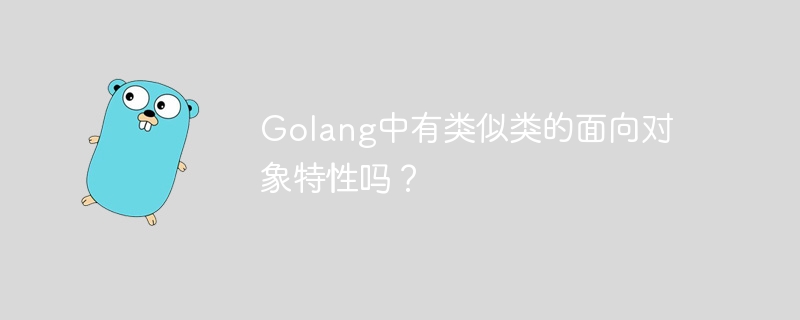

There is no concept of a class in the traditional sense in Golang (Go language), but it provides a data type called a structure, through which a similar class can be implemented object-oriented features. In this article, we'll explain how to use structures to implement object-oriented features and provide concrete code examples.
First, let us take a look at the definition and use of structures. In Golang, structures can be defined through the type keyword and then used where needed. Structures can contain properties (fields) and methods to simulate the behavior of a class. The following is a simple structure definition example:
package main
import "fmt"
type Person struct {
Name string
Age int
}
func (p *Person) SayHello() {
fmt.Printf("Hello, my name is %s and I am %d years old.
", p.Name, p.Age)
}
func main() {
p := Person{Name: "Alice", Age: 30}
p.SayHello()
}In the above code, we define a Person structure, which contains two attributes: Name and Age, and also defines A SayHello method is used to print personal information. In the main function, a Person object is created and the SayHello method is called to output a greeting.
Encapsulation is an important concept in object-oriented programming. By setting access rights appropriately, data can be protected from being modified at will. In Golang, you can access external packages through fields starting with uppercase letters, while fields starting with lowercase letters can only be accessed within this package. Let's look at an example:
package main
import "fmt"
type Person struct {
name string
age int
}
func NewPerson(name string, age int) *Person {
return &Person{name: name, age: age}
}
func (p *Person) GetName() string {
return p.name
}
func main() {
p := NewPerson("Bob", 25)
fmt.Println("Name:", p.GetName())
// fmt.Println("Age:", p.age) // Attempts to access private fields will report an error
}In the above code, we set the name and age fields to private and create the Person# through the NewPerson function ##Object and provides a GetName method for getting the name. If you try to access private fields directly, the compiler will report an error.
Animal and Dog, Dog contains a Animal Embedded fields of type . By overriding the Speak method, Dog implements polymorphic features, and different types of animals can have different sounds.
To summarize, although there is no concept of classes in Golang, through features such as structures, methods, encapsulation, combinations and interfaces, we can simulate the behavior of classes to implement object-oriented programming ideas. This method can write code concisely and efficiently, and is also flexible and maintainable. It is one of the characteristics of the Golang language. I hope the introduction in this article will help you understand the object-oriented features of Golang.
The above is the detailed content of Are there any class-like object-oriented features in Golang?. For more information, please follow other related articles on the PHP Chinese website!
 Three major characteristics of java
Three major characteristics of java
 Usage of Type keyword in Go
Usage of Type keyword in Go
 How to implement linked list in go
How to implement linked list in go
 What are the Go language programming software?
What are the Go language programming software?
 How to learn go language from 0 basics
How to learn go language from 0 basics
 How to define variables in golang
How to define variables in golang
 What are the methods to implement operator overloading in Go language?
What are the methods to implement operator overloading in Go language?
 What are the operators in Go language?
What are the operators in Go language?




